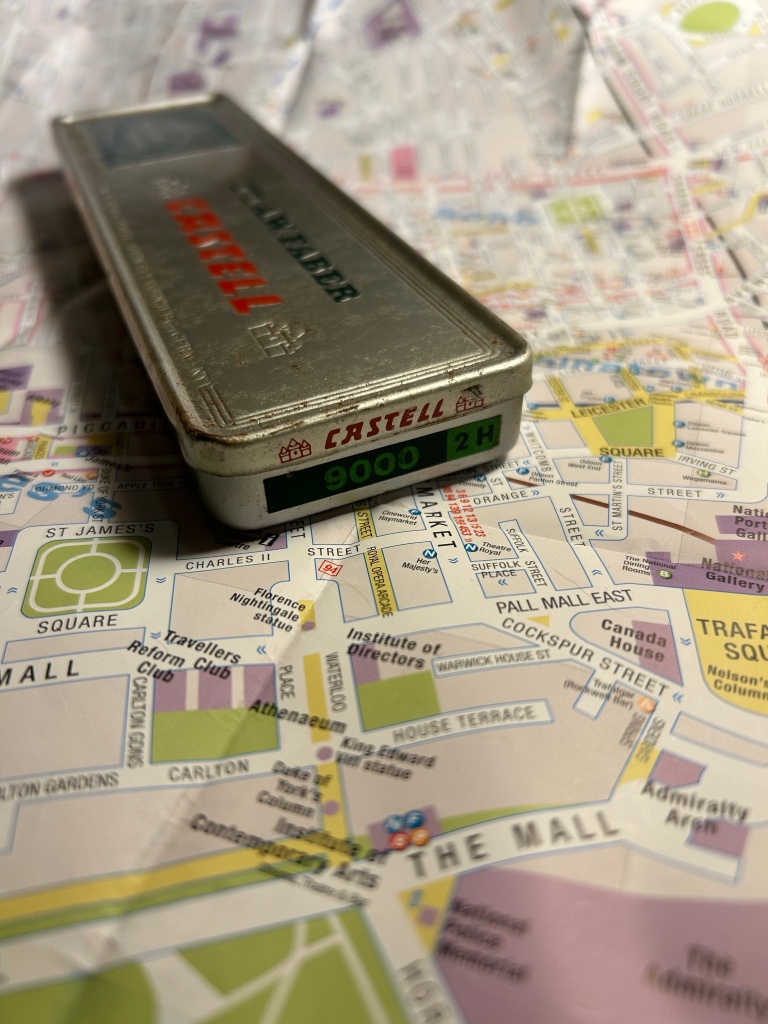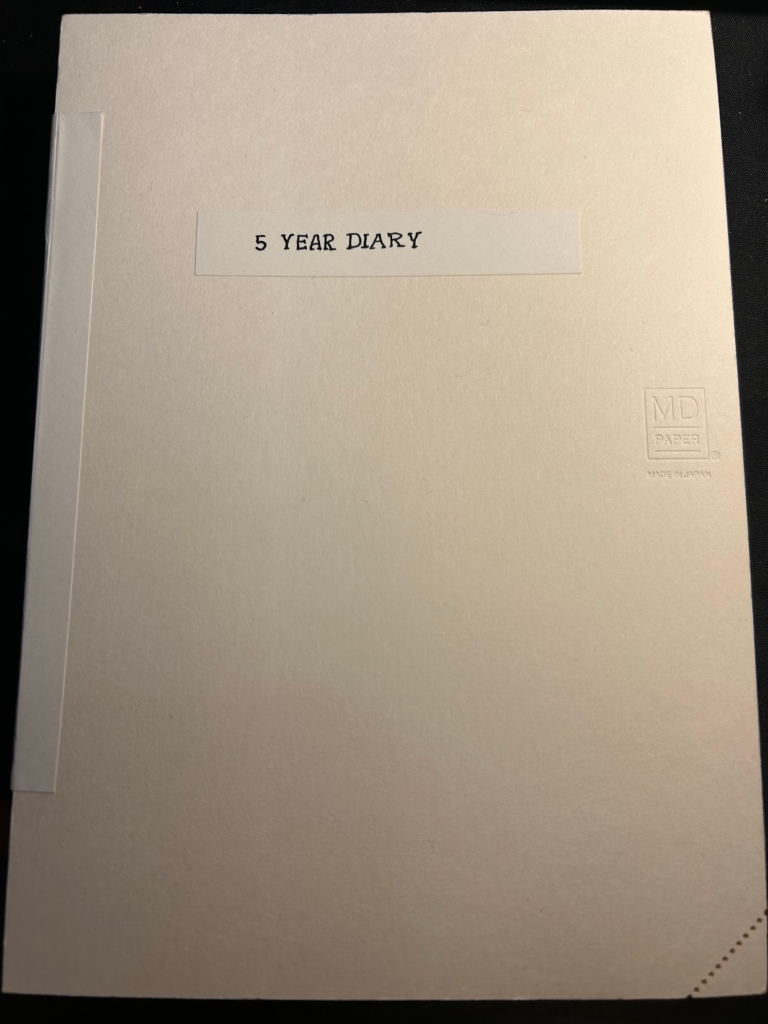The intro post to this series is here, journaling for mental clarity is here, journaling through fear is here. Journaling to clear your mind is here.
Journaling to work out choices seems pretty obvious: write down all your options in a table of some sort and compare them. There’s no need for a blog post on that. You know how to create comparison tables — the only trick to them is to find the appropriate comparison criteria to use.
This isn’t a post about how to compare a vacation at home with a vacation abroad, or which large screen TV to buy. This is a post about working through the tough choices in life, those that keep you up at night, those that torment you well before you make them and well after. If I’ve scared you off, you can jump to then end where I discuss journaling as a way to avoid the FOMO frenzy involved in all collection based hobbies.
Journaling to Work Out Tough Choices
There’s a pretty silly rule called the “5×5 rule” that states that if it won’t matter in 5 years, don’t spend more than 5 minutes stressing about it. That’s suposed to help people deal with anxiety and stress — like I said, it’s pretty silly and not very useful. If telling an anxious person “don’t sweat it, it won’t matter in 5 years” would have helped life would have been a lot simpler for a lot of people, but our brains just don’t work that way.
Instead I’d suggest trying this approach:
1. Open your journal and consider the issue you’re facing. Start by answering the following questions: is this a choice? Is this a choice that I can and should make on my own? Is this a choice that I can make now or does something need to happen first (someone needs to get back to me, I need to research something, something needs to happen before I can decide what to do)?
2. Is this something that will affect me and the people around me for 5 minutes, 5 days, 5 weeks, 5 months, 5 years?
3. If it’s for 5 months or 5 years — are you in the right mindset to make this choice now, or do you need to calm you mind first, get away and change perspective?
4. Imagine that a colleague at work is telling you about how they faced the exact same choice, and then imagine them selecting each option in turn. Do you think they’re an idiot? If someone else would say that they made the wrong choice could you defend them by articulating why the choice they made makes sense?
5. Imagine making a choice regarding the issue you’re facing, and then in six months from now defending/explaining your choice after it turned out to be wrong. How do you feel? Is there anything you could do to improve your odds of success?
These may sound a bit abstract so I’m going to give an example of how I used these prompts with one of the toughest questions I ever faced. This is going to get a bit dark, so if that bothers you, skip to the next heading.
Making a Really Tough Choice
Very early into my chemo treatments my oncologist told me that after my interim PET CT we might have to make a choice about the rest of the treatment course. If the results were bad (i.e. my cancer wasn’t responding well to treatment), then there wouldn’t be a choice to make: I’d have to go on more aggressive chemo, period. However, if the cancer was responding well to treatment, there would be several treatment options that we would have to discuss. I won’t go into all the options and discussions we had, I’ll just go into the main one: I could continue the full course of treatment at full dosage, or I could continue the treatment on a reduced dose and a smaller chemo cocktail. The full dose of treatment was harder on my body, would pretty certainly cause permanent neuropathy and perhaps damage my lungs and heart, but would provide the best chances of avoiding recurrence. The reduced dose was easier on the body, but provided less protection from recurrence. It wasn’t clear cut, there were no guarantees, and there was a good chance that I could go through the full treatment, ruin my body, and still have a recurrence – in fact a few months after I finished treatment that is exactly what happened to a woman that I was mentoring through the process. This is cancer, and that’s just the way it goes.
I had about a month to consider the options, and a few weeks to make my choice. It spanned a lot of journal entries, many of them repetitive, so the following is a condensed, cleaned up version of them all:
- Is this a choice? As my PET CT results came back with a good response to treatment, then yes, it was a choice that I could make. Is this a choice that I can and should make on my own? I talked to my family and I talked to my doctor several times, but ultimately I had to make the choice myself as I was the one that was going to have to live with the consequences. Is this a choice that I can make now? I added this question after having this debate with myself, in an attempt to stop the anxious “what if”in g in my head through the early part of treatment. I will be honest – it didn’t help. I knew there was no point in considering anything before my PET results came in, but my brain (actually, brains in general) didn’t work like that. I was in a constant anxiety driven “what if, what if, what if” loop, scanning for indication of treatment success or failure, information gathering obsessively, in what turned out to be the early manifestations of my PTSD. I’m being honest here so that if you use these prompts and they don’t help you, you won’t go beating yourself up about it. They are merely a suggestion, they may not help, and you may need more than journaling to get through certain points in your life. I know that I did.
- Is this something that will affect me and the people around me for 5 minutes, 5 days, 5 weeks, 5 months, 5 years? This was a 5 years kind of issue, so I felt fine taking it seriously and investing a lot of time and effort into making the best choice I could under the circumstances.
- Are you in the right mindset to make this choice now? I’ll cut to the chase – I wasn’t in the right mindset, I had no idea how bad my mindset was at the time, but it didn’t matter. I had to make the choice. Sometime you just have to make important, tough decisions when you’re not in the right mindset. That’s just life.
- I didn’t do the “what if this was somebody else’s problem” bit for this choice. I just couldn’t bring myself to do that.
- Imagine if you’ve made the wrong choice – I’m not going to discuss this here, because it’s very dark and pointless. I will discuss the odds of success bit though – there wasn’t much I could do to improve the treatment odds once I made my choice, but, and here’s the important bit, there were some things that I could. They were extremely tough and would provide minor improvements at best, but it was the best that I had, and minor improvements are not zero improvements. This is what made me drag myself out each day for a walk, even when my body was screaming that it couldn’t, it wouldn’t, it just won’t go on one step further dammit. It’s what made me isolate myself from people, follow my doctor’s and nurses’ instructions to the letter, etc. Maybe it helped, maybe it didn’t, there’s no way of knowing without a time machine really. The point is I made a choice and I did my best to make sure that it would be a good one.
Do I really want this or am I buying it out of a fear of missing out?
Hey, you’re here! It means that you’re interested in the lighter side of this exercise, which is basically journalling yourself out of FOMO. This is what I write in my journal to make sure that I’m buying something because I really want it, or whether I’m being carried away by the feeding frenzy of a new release, a limited edition, or a special “once in a lifetime” deal.
- Write down why you want the thing. If you are doing this exercise, then your reasons can’t be because it’s limited, because it completes a set, because you’ve bought every other thing in the series, because everyone is talking about it, because you think you’ll be able to flip it later. It also can’t be because it’s for charity – if you want to donate, donate directly.
- Write down how many other things similar to it do you already own, and when was the last time you used/appreciated one of them. How often will you be able to use the new thing?
- Write down an experience you could have with the money that thing costs – anything from a concert ticket, to a theatre/musical ticket, a meal at that place you’ve been wanting to try, an hour lazing about at that cool coffee place trying some new things to eat/drink, an entrance to the local climbing gym, a pottery class, etc.
- Write down what are the chances of a better thing popping up in the near future, and ask yourself if you’re buying this thing because that’s what you can afford now, but really you’d much rather splurge on a better thing.
Look at what you wrote down, and then wait a few days or a week, read it again and see if the thing you want to buy is still attractive to you.
And if you’re just looking for a nice pick me up, try shopping in your existing stash. I’m pretty sure you’ll find something there that will make you smile.



















